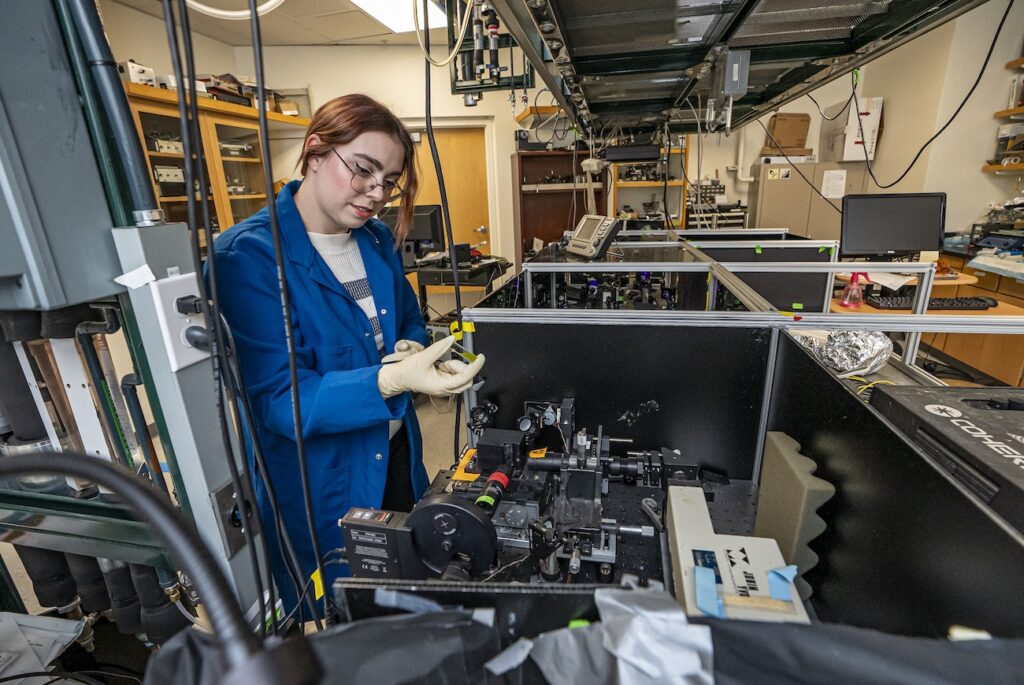Understanding the molecular mechanisms that underlie photoprotective memory in algae could help improve crop productivity.
Although plants and algae may appear to passively absorb whatever sunlight is available, they are actually constantly adjusting to changing light conditions in order to maximize their efficiency and chances of survival. Aiding in that response is a rudimentary memory system, known as photoprotective memory, which allows these organisms to respond more rapidly to future changes in light intensity while protecting photosynthetic proteins. A new study co-led by Graham Fleming, a senior faculty scientist in the Molecular Biophysics and Integrated Bioimaging (MBIB) Division, and Krishna Niyogi, a faculty scientist in MBIB, reveals the precise molecular machinery that underpins photoprotective memory in green algae. The results may help scientists develop more productive plants and improve crop yields.

The photoprotective response in plants and green algae involves three light-absorbing pigment molecules: violaxanthin (V), antheraxanthin (A), and zeaxanthin (Z). In the so-called VAZ cycle, fluctuations in light trigger chemical conversions between these molecules, dissipating bursts of solar energy and helping regulate and protect photosynthetic proteins. To understand how the VAZ cycle responds to fluctuating light, the researchers exposed Nannochloropsis oceanica algae to irregular light sequences and measured the varying concentrations of the three pigments using high-performance liquid chromatography.
Their experiments helped them determine which components of the VAZ cycle are key to photoprotection and how the system can respond more quickly after previous exposures. The three-part nature of the VAZ cycle is instrumental: When a bright light turns on, V converts to A which converts to Z, the molecule best able to dissipate the extra light energy. When the light turns off, Z converts back to A, which eventually converts back to V. However, the various conversions happen at different rates. Once the bright light turns off, the conversion from A back to V happens much slower than Z to A, so if the light suddenly comes back on, the system can reverse direction and quickly replenish the concentration of Z instead. These differences in conversion rates act as a buffer, slowing down crucial steps and allowing the system to quickly change direction if needed.
Building on this work, the research team is now exploring the behavior of an alga engineered to have only a two-part system for photoprotective response. The researchers also plan to expand their investigations to plants, which are significantly more complex than algae and have additional mechanisms for responding to light fluctuations.
Other Biosciences contributors to this work include co-lead author Audrey Short and Thien Crisanto, both UC Berkeley graduate students in the Biosciences Area. In addition to their appointments in the Biosciences Area, Graham Fleming is a professor of chemistry at UC Berkeley and Krishna Niyogi is a professor of plant and microbial biology at UC Berkeley.




